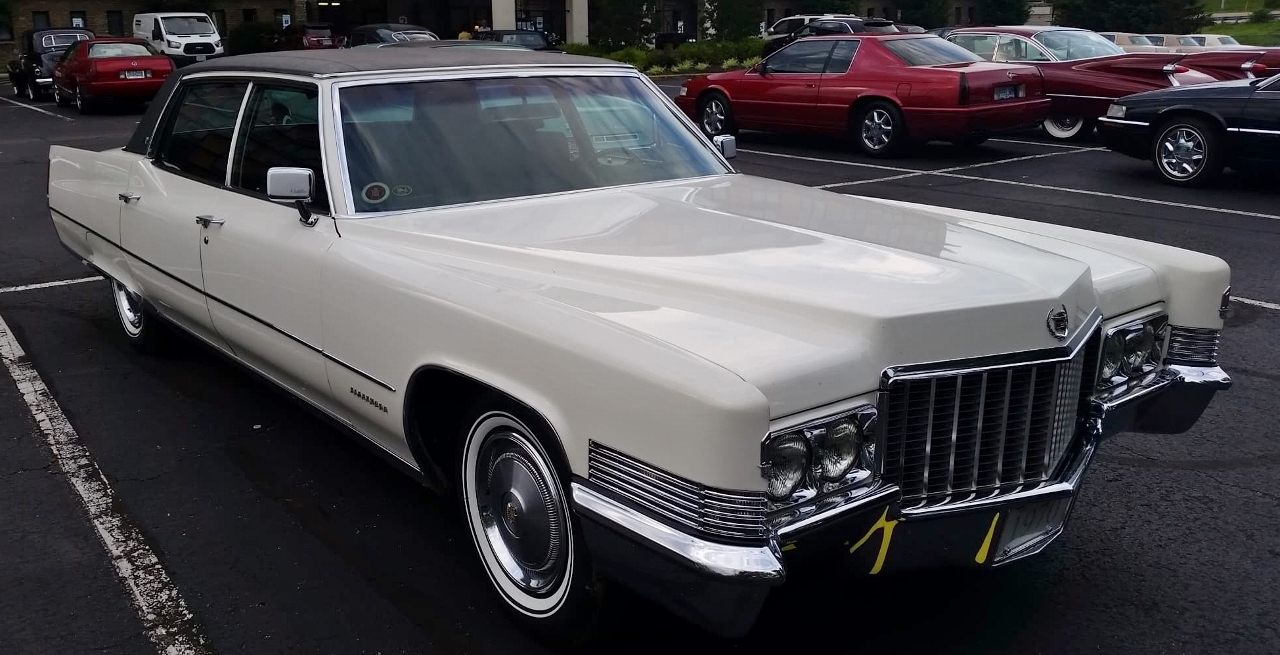
I’ve always loved Cadillacs. It goes way back. As a kid, watching Magnum, P.I. and various and sundry 1970s movies like The Enforcer and Magnum Force, I was more interested in the bad guys’ Cadillacs chasing Magnum or being followed by Harry Callahan in his Custom 500. Starting with its inception in 1902 and continuing more or less through the Sixties, Cadillac produced well-built, well-finished, impressive–and expensive–cars.
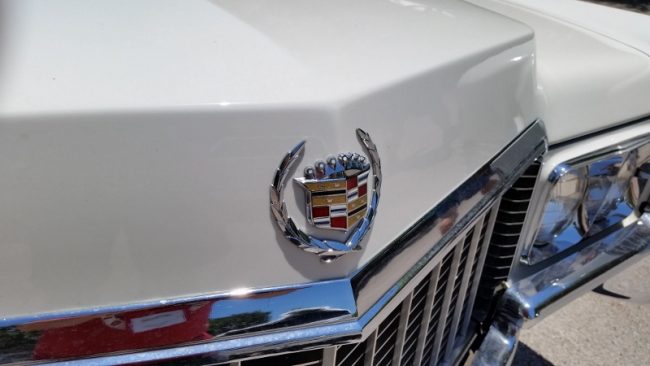
Inside and out, wherever you looked you saw chromed, die-cast metal, leather, fine fabrics and extensive gadgetry. Smooth, quiet, powerful. That was Cadillac. Increasing safety regulations, increasing sales of Cadillacs (and the need to speed up production accordingly) meant that some of that very visible quality and integrity went down, just a little bit. But in 1970, Cadillacs still looked good, and provided proper motivation if one felt the need to mat the accelerator pedal.

The 1970 Cadillacs were mildly restyled versions of the 1969 models. In my opinion, the 1970 Cadillac is that uncommon event when a facelift actually winds up looking better than the original version.
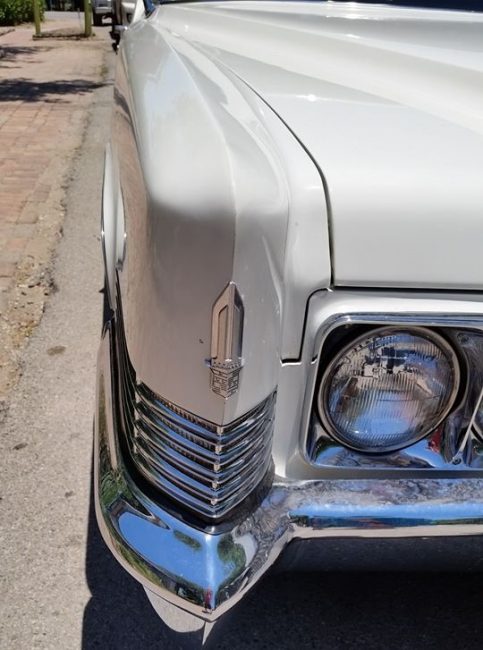
The revisions involved nothing drastic, and every refinement–from the new eggcrate grille, to new wheel covers, to new taillights set above a deeper V, to the fender peaks bearing the Art Moderne Cadillac emblem–simply looked great.

It didn’t hurt that the 1969 body shell was very well proportioned for a luxury car, and enhanced by a subtle character line that flowed from the top of the front fender through the door handles before melting into the center of the rear-quarter panel. Very elegant, and so very appropriate to a Cadillac. The Fleetwood Sixty Special and Fleetwood Brougham looked particularly elegant.
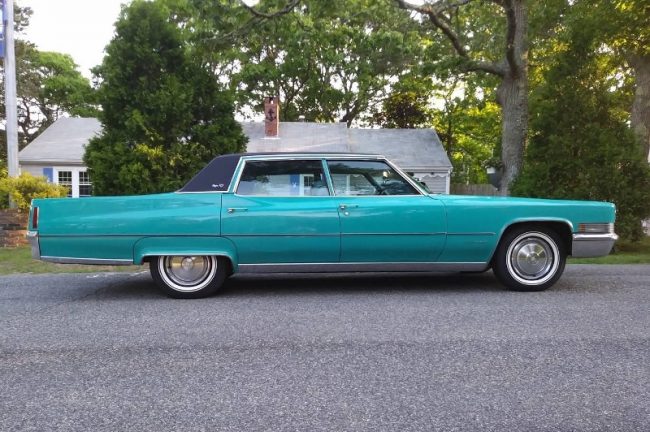
The Calais and Hardtop Sedan de Ville had an attractive “fast” C-pillar; but in my opinion, the Fleetwoods, with their traditional wide C-pillar, were the best of the bunch. The 1970 Brougham appeared in the in Lucerne Aqua Firemist (same color as my friend Laurie Kraynick’s car, seen above). Like Lincoln’s Moondust colors, Firemist paints had a high metallic/pearlescent effect compared with the “standard” color choices. Firemist colors were available on all 1970 models for an additional $205.

While some of the interior appointments were not quite of pre-1968 quality, the cabin offered an abundance of well-tailored leather and fine fabrics and, most certainly, plenty of stretch-out room.
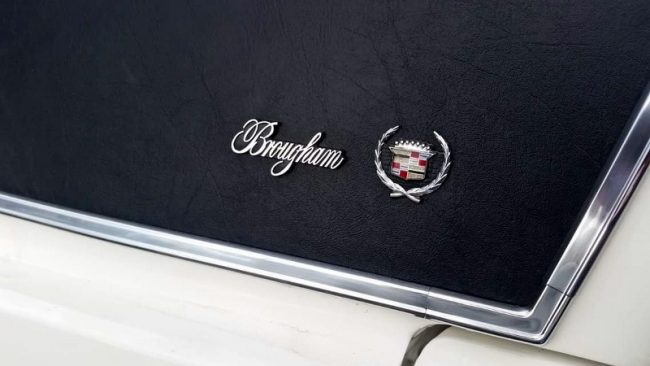
Which is exactly as it should be, since the Sixty Special and vinyl-topped Brougham were the largest Caddies in the lineup save the Seventy-Five Series Sedan and Limousine. We’re talking about 133 inches of wheelbase, 228.5 inches of overall length and a road-hugging weight of 4,835 pounds (or 4,830 lbs. for the steel-roofed Sixty Special).

Yes, much of the chrome was now chrome-plated plastic, and the wood trim was now simulated woodgrain. Granted, this isn’t quite the same as, say, a 1960 Cadillac interior. But times change. Tastes change too. Keep in mind that 1968 brought much stricter limitations on the amount of chrome and other bright interior trim in American cars.
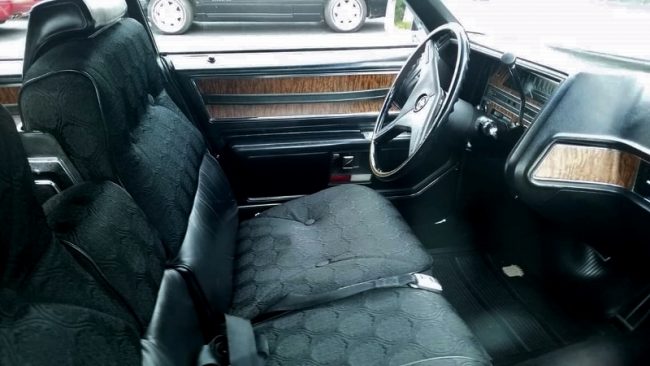
The inevitable result was a somewhat less flashy look for instrument panels, steering wheels and door panels. Considering the level of trim and furnishings expected in a luxury car, the new regulations surely hit Cadillac harder than, say, Plymouth.
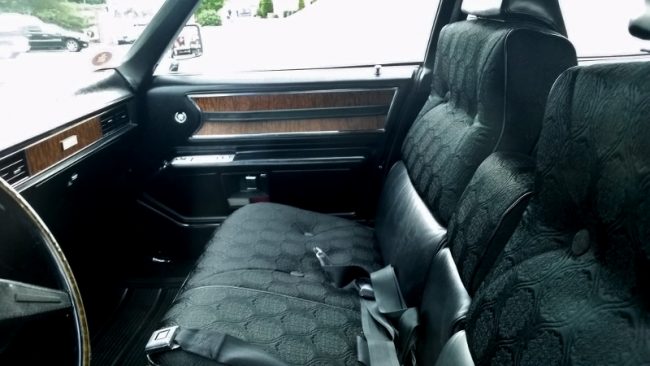
That said, I personally find the ’70 dash attractive. There was one cheap feature on ’70 Cadillacs, in my opinion. Regardless of whether the rest of the interior was navy blue, aqua, white or red, the steering wheel was black, just like a Chevy Biscayne.

That aside, there still was a lot that recommended the 1970 Cadillac, not the least of which was its proven powertrain. At its heart was the 472 cu in V8, which featured five main bearings, hydraulic valve lifters, and a Rochester four-barrel Quadrajet Model 4MV carb.

Unsurprisingly, it provided power, torque and durability that were second to none. Still rated at 375 hp and 525 wonderful lb-ft of torque, it also gave up nothing to the 1968 engine. As the saying went, a Cadillac could pass anything but a gas station. Turbo-Hydramatic was an expected and welcome standard feature.

Just below the $7,284 Sixty Special Brougham was the “plain” Sixty Special, which eschewed the Brougham’s padded vinyl roof. While much the same as the Brougham, it was priced at a slightly lower $6,953. A mere 1,738 Sixty Specials were built for the 1970 model year, versus 16,913 Broughams. Surely few were surprised that 1970 was the steel-roofed Fleetwood’s last year. The vinyl-topped Brougham was clearly the more popular machine.

But whether a Sixty Special or Sixty Special Brougham, Fleetwoods offered all of the features of the de Ville series along with automatic level control. As you’d expect, the stitching on Fleetwood seats and door panels was unique.
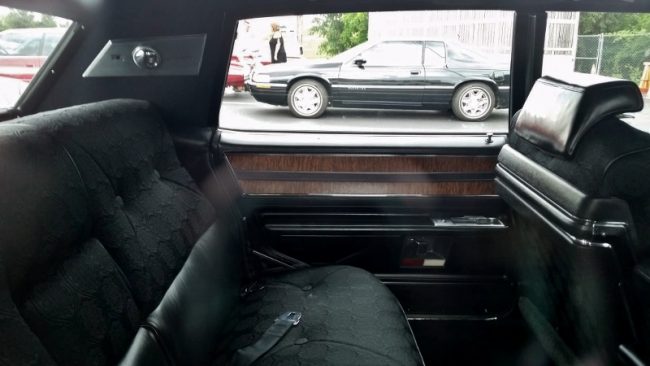
And complemented what the 1970 brochure described as “the rich look of oriental tamo wood on the doors and instrument panel. Sixty Specials offered a choice of seven sumptuous leather interiors, four Dumbarton cloth-and-leather selections, and four upholstered in Divan cloth. And there were colors–lots of colors. Remember when car interiors offered real colors? Personally, I love the look of the navy blue Sierra grain leather shown above.

The Brougham set itself apart from the Sixty Special primarily with its oh-so-current padded vinyl roof, but also featured adjustable rear-compartment reading lights, folding carpeted rear footrests and a two-way power Dual Comfort front seat. Full power control of the seats could be had for an extra $90-$116, depending on the model.
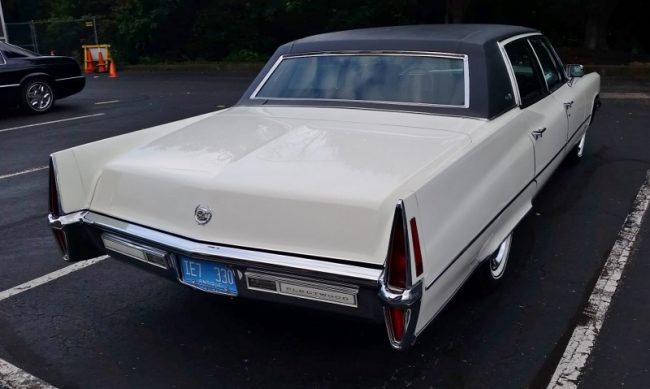
Both the Sixty Special and Brougham received thin horizontal chrome belt line molding, bright wheel opening moldings and a wide chrome rocker molding with rear-quarter panel extensions. Fender skirts? But of course.

All in all, Cadillac had a good year in 1970. It produced 238,745 vehicles, a marked improvement over the 223,267 built in 1969. In fact, 1970 production set an all-time division record, despite disappointing calendar-year sales of 152,859 units, a performance due in large part to the major GM strike that, well, struck during the 1970 model year.
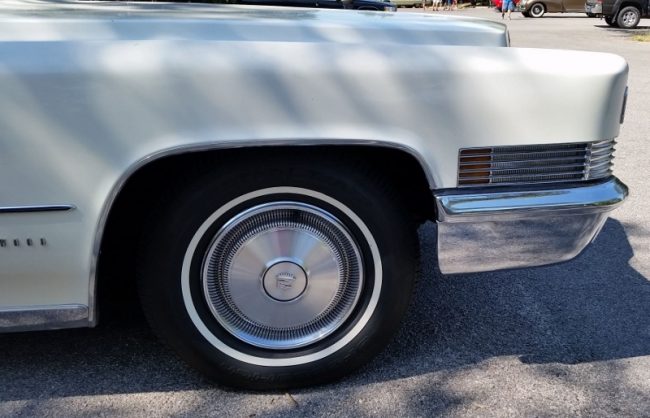
To my eye the 1970 models remained every bit a Cadillac. What’s more, 1970 Caddys were safer, thanks to new 1968 Federal safety regs. Seat belts were provided for every passenger, along with shoulder harnesses for the two outboard front-seat passengers.
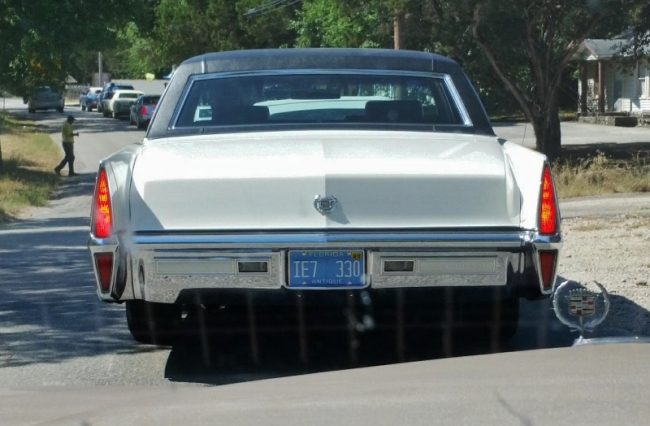
A dual-circuit brake system (a Cadillac feature prior to 1968); headrests; an energy-absorbing steering column; anti-glare dash top and A-pillar covers (the bane of all you chrome-loving ’60s Cadillac interior lovers); and power front disc brakes with finned rear drums were present and accounted for on every 1970 Caddy.
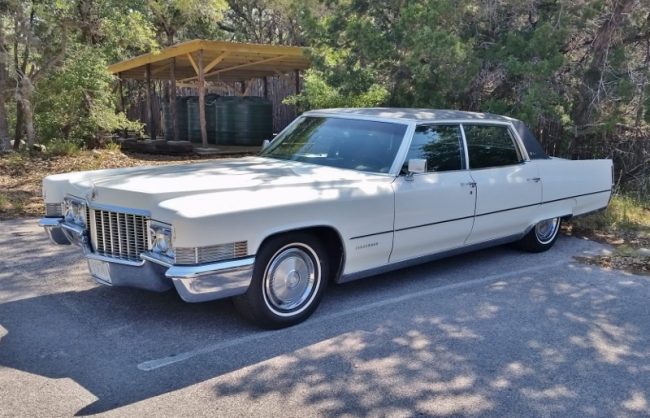
I actually got to ride in one of these. A grade school friend’s mom had a gold ’70 Brougham with a white top and white leather interior. They actually had a thing for old Cadillacs, since they also had a navy blue ’69 (I think) Seventy-Five sedan. Both cars were a bit worn out, but still did their fine pedigree proud.
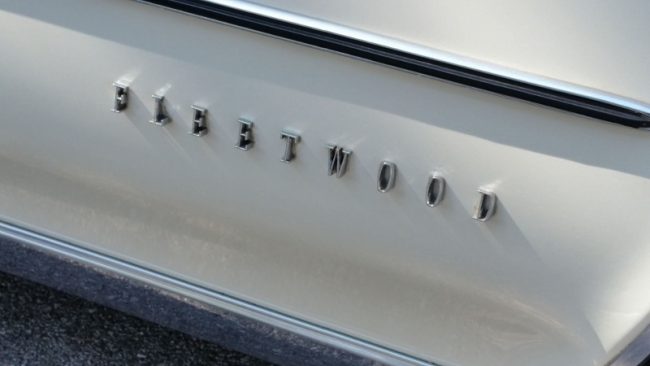
Anyway, there was a class trip to the Rock Island Arsenal when I was in second or third grade, and Luke’s mom was one of the drivers. Guess who I rode with? It was a cool car that was great to ride in. To this day I have fond memories of that car. She kept on driving it daily for years, even though it steadily got rougher. The last time I recall it running I was in maybe sixth or seventh grade.
Years later, I ran across the very same car (it’s hard to miss that color combination) in the local junkyard. I was sad to see it had succumbed, but I guess it was nice to get to see it one last time. I took the Fleetwood Brougham plaque off the instrument panel as a souvenir of a happy childhood memory. To this day, it sits on my desk at home.
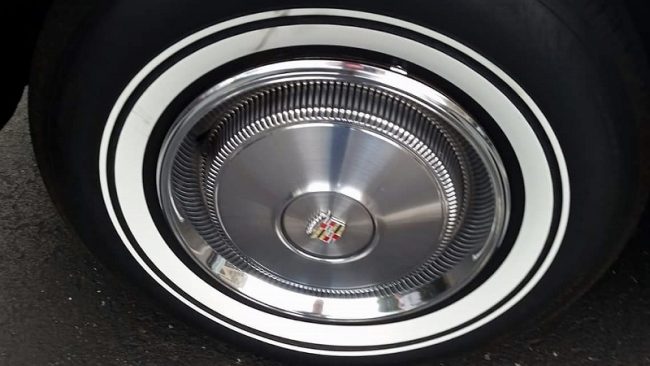
1970 was a good year for Cadillac, and in my opinion, a good year for Cadillacs. 1971 would bring completely redesigned Calais, de Ville, Fleetwood and Fleetwood Eldorado models, and the de Ville convertible would be gone, replaced with the front-wheel drive Eldorado drop top. Those were some stylish cars as well, but I prefer the 1970 model. They just ticked all of the boxes. Looks, comfort, power and prestige. Best of all, it was a Cadillac.

Note: Special thanks are due to my friend Jayson Coombes, who took these pictures at two different CLC meets: San Marcos, Texas last year, and Louisville, Kentucky, just this past week. Thank you sir, you’re a gentleman and a scholar. -TK








19 Comments
The normally aspirated torque at low rpm is one aspect of the old machines that has never been matched by the moderns. The torque number Tom quoted was gross and net was probably around 410 foot pounds. This yielded a torque ratio of better than 12 foot pounds per pound. A 70 S class, with its then new 4.5 V8 was over 15 pounds per foot pound, a big improvement over their now overmatched inline sixes. The 4.5 at least compensated by being strong at high rpm. The CT6 Tom tested for us a few weeks ago,, a rare normally aspirated modern offering had a torque to weight ratio over 14 and only at a much higher rpm.
Our German friends are now exclusively turbocharged. This lets that point to ridiculous horsepower and torque numbers, but only after dealing with lag from start and the fact that the turbos have given their all before their engines reached the high rpm running that used to be their specialty.
We have traded good engines that displayed their nation’s personality for short lived junk that is better at headline numbers of power output and mileage than actual driving. I blame W Edwards Deming, he believed quality should go from careful inspection by professional humans to generating numbers that could be measured and compared. Numbers of course can be gamed and the lack of actual inspection leaves the result less than satisfying. Fire the single math whiz and bring back the many engineers and let us get back our personalities!
John, have you noticed that virtually every one of your comments on this site are virtually the same comment? “New cars are bad dagnabit, low torque, it’s just TURRIBLE, now that 1987 Coupe de Ville, that beats them all!” I drove the CT6 and really enjoyed it. I recently drove a 2019 XTS Luxury with 17 miles on the odometer, and it has essentially convinced me to get one, eventually. I’ve also driven many 1989-93 de Villes, a ’92 SDV just a year and a half ago. Enjoyed those a great deal as well. People can like both new and older cars, you know.
Maybe you need a vacation. See some new sights. Have some new experiences. Exercise the little gray cells? Just a thought.
I will do that. Thanks
Or maybe just STFU for a while…….
Enjoyed this entry and the beautiful photos, but no mention of the most famous 1970 Cadillac of all: Boss Hogg’s de Ville convertible? According to Hagerty, a nice one will now set you back between $17K-$22K. Or as Boss would say, “Seventeen thousand simoleons…caish on the barrel head!”
Tom
Great write-up and lovely car. I have a ’69 60 Special that I’ve had for twenty eight years and still enjoy.
I’d love to have one of those old Caddies as a DD. My experience in the 90s with a Northstar Eldo were good except the quality of the car overall was poorer than a Cadillac should be, and it fell in value as fast as I could pay it off. Sold it for what I owed on it a few years later.
I love the classic cars, and the old American heavy metal has an attraction for me. Maybe because when I was a kid I marvels at/hated the “land yachts” but once you ride in one, hey, that’s nice!
I’m the opposite, I’ve never really liked the 1969-1970 Cadillacs, I’ll take one if the situation was right, but if I was choosing, I’d rather have the stacked headlight 1968’s or I’d jump ahead to the 1972’s which are some of my favorites. My main gripes are the same ones you bring up, the dash is kinda blah for a Cadillac.
I always though the 69-70’s also had hilariously huge seats, which must have made some of the typical Cadillac drivers look like little kids behind the wheel.
When I got out of the Navy, I went to Chesapeake Cadillac in Baltimore to test drive a new Caddy (no chance to buy, just to drive). The salesman showed mercy and took me out in hid DeVille convertible demo. I can still remember the power and the surprising silence. But, I also saw the really cheapening of the dash and door panels. Seats were Cadillac good, but the rest of the interior looked very Chevy. A sad comedown from the ’65-’66.
One of the best writeups!!!
I wonder if garage design follows trends in cars. Would this even fit inside the average garage built in the last 30 years?
Garages tend to be 2 or 3 wide now a days. So in square footage, I’m betting the average garage is larger, but is it deeper?
I’d say no, this probably wouldn’t fit in many newer garages, or older ones made before 1960 either maybe. The grand era of garage size was probably between the 1960’s and 70’s, those could accommodate monsters like this and usually a wood paneled wagon of similar size alongside it. With plenty of room around the cars for storage and set of Harvest Gold Maytags.
Never had Harvest Gold Maytags. Pretty sure the cottage we owned when I was a kid was Harvest Gold.
Even included 4 X 8 sheets of “Wood” paneling on the walls.
I shouldn’t knock it. Other than the foundation and shell, my father did all the work on the inside himself other than basic plumbing (uncle) and electrical (a coworker of his).
We had all Harvest Gold Kenmores in my house when I was a kid down to the washing machines an the trash compactor too, our kitchen also had “saloon style” doors to go in and out like a wild west saloon, I loved those as a kid.
I can just get my ’76 SDV in my 1986 garage with about two inches to spare. If it was a ’76 Fleetwood, it would have to sit outside in the elements! Maybe garages will grow again, considering the proliferation of large trucks and SUV’s?
Tom brings up an important point about the slipping quality of Cadillac interiors, but nothing would make that clearer than a comparison with a well-equipped 1970 Chevrolet Caprice. The only “advantage” the Cadillac offered was an even more ponderous size, as no one would likely complain about the lack of space in a full-size Chevy, and with a 454 it would easily run away from the heavier Caddy and its 472.
The were things that were either optional or standard on the Cadillac that you couldn’t get any price on the Chevrolet like the dimmer and sentinel options that were popular with Cadillac buyers, the door warning and courtesy lamps, the front and rear armrests that were in all “standard” Cadillacs except the Calais, the Fleetwood added rear reading lamps and rear footrests too, its a lot of gingerbread, but I really think they seldom lost a sale to a Caprice, plus the extra snobbery of the badge, which is worth more to some people than all those other features, sort of how people still pay $4000 down and $499 a month for the “privilege” of a saying the have “a Mercedes” even if it s a FWD bag of shit Mercedes with a 4 banger and vinyl……..
Yes Cadillac had a few bells and whistles that might not be available on the Caprice, but a quick scan of the interiors would reveal far fewer differences in perceived quality and luxury than would have been the case only a few years before. Cadillac was slipping at the same time the Chevy was upping their game when it came to gadgets, luxury features, and performance. Furthermore, Cadillac did not offer anything “under the skin” that a Cadillac owner could brag about as superior to the Chevy – they both used carb fed OHV cast-iron V-8s, both had the exact same automatic transmission, front disc/rear drum brakes, and live rear axle. The failure to provide more sophisticated engineering and slipping quality is why Cadillac (and Lincoln) were increasingly losing sales to Mercedes, Volvo (fuel injection, 4 wheel discs, and lots of safety tech), Jaguar (terrible reliablity but real wood and leather and IRS and 4 wheel discs), and BMW from the 1970s on.
My Dad had a Bayberry Green with Black top and interior 70. He got a new one every 2yrs after that. My favorite was 72 and 92.